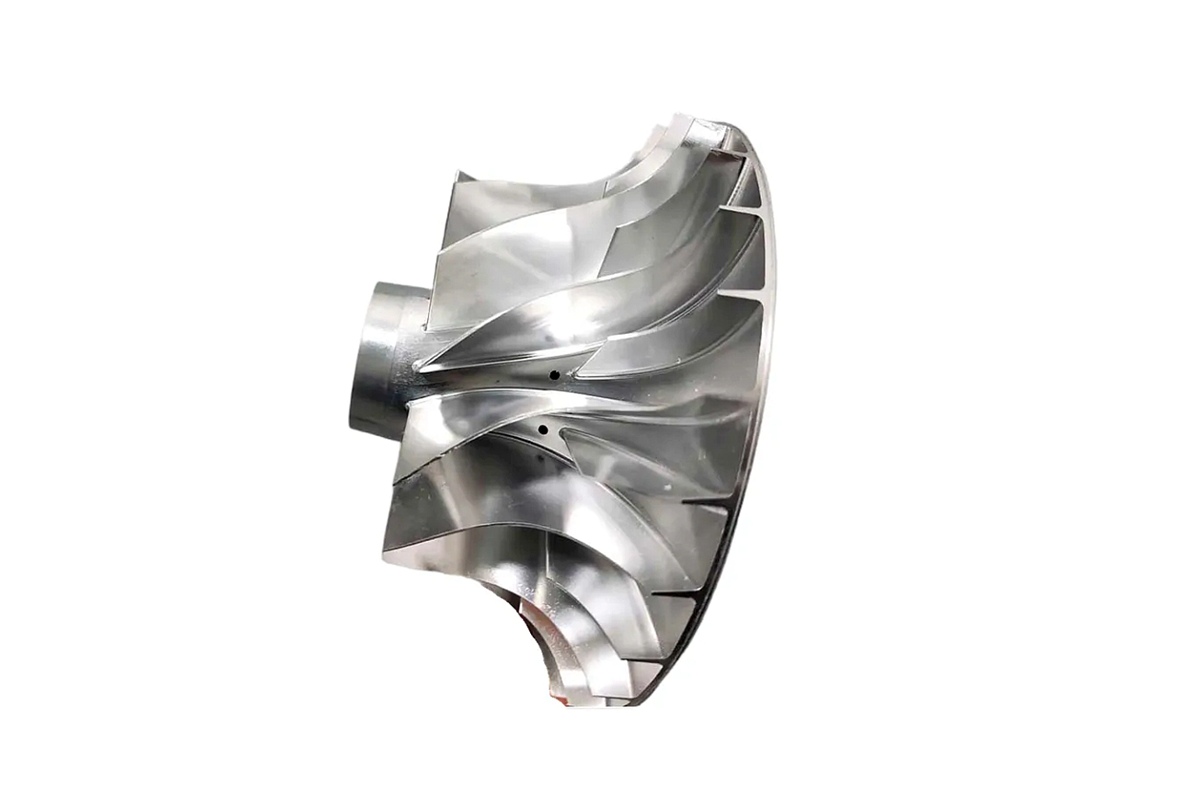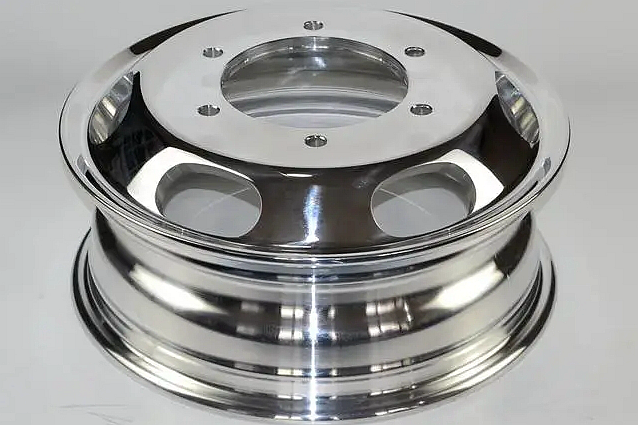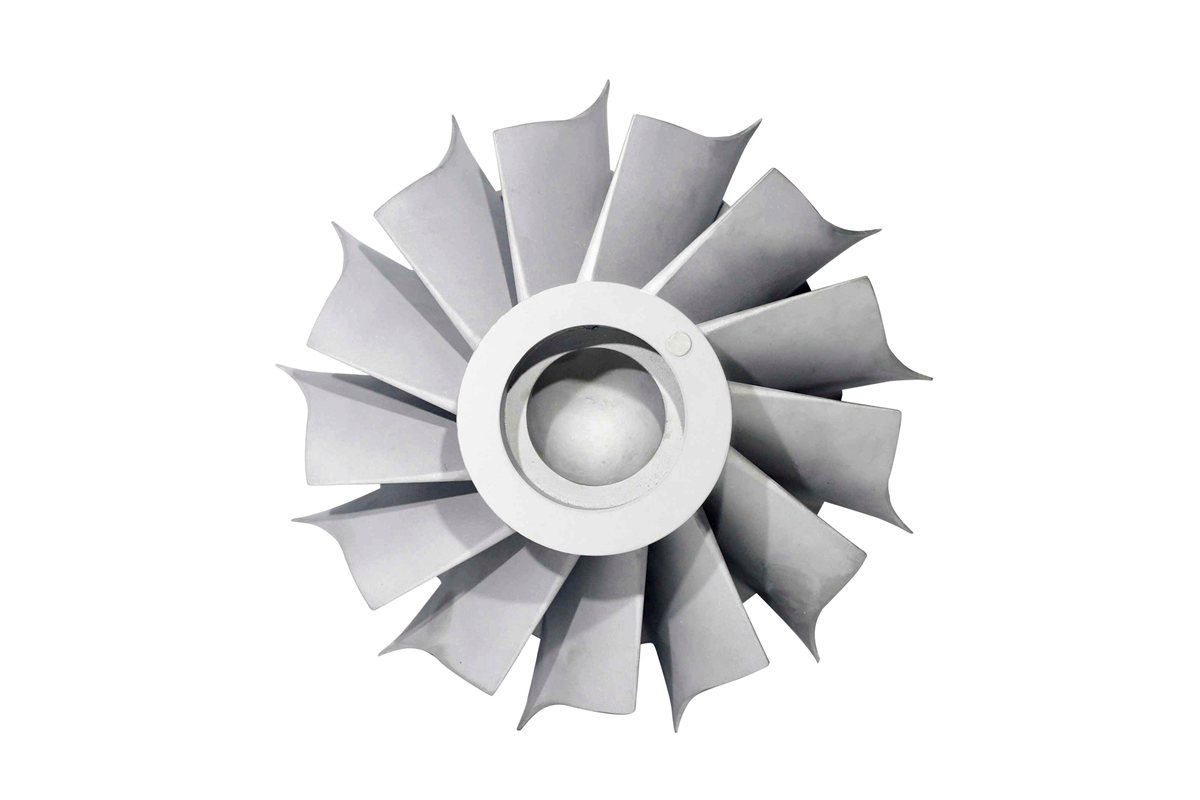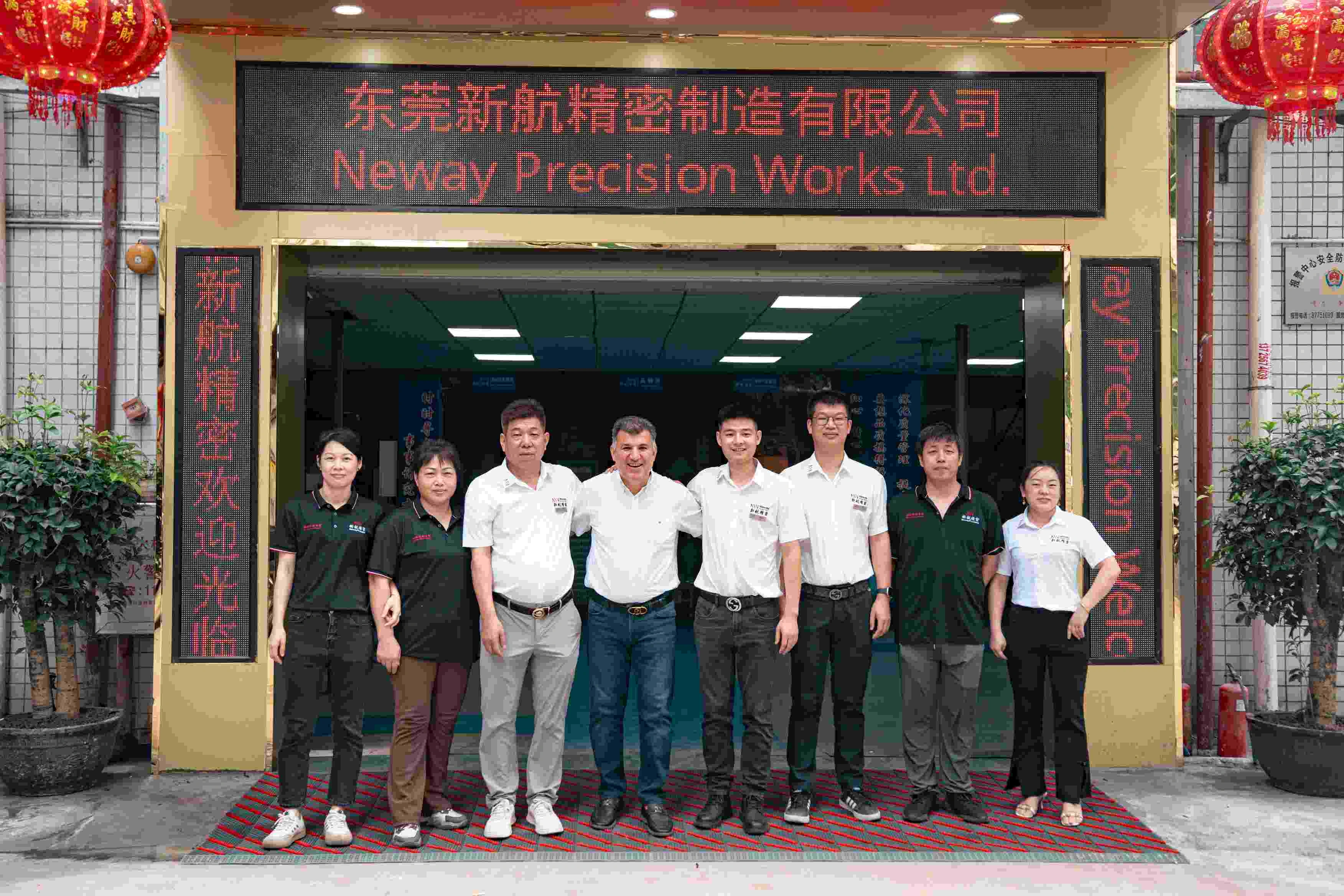Controlling Sulfur Levels in Superalloy Castings: Preventing Brittleness and Enhancing Durability
Superalloys, known for their exceptional ability to withstand extreme environments, are the backbone of critical industries such as aerospace and aviation, power generation, and military and defense. However, these alloys are susceptible to their chemical composition. One of the most crucial elements that directly affect the performance of superalloys is sulfur. Although sulfur is a natural impurity in many alloys, its content must be carefully controlled, as even trace amounts can lead to brittleness and other undesirable properties. This blog explores the importance of controlling sulfur levels in superalloy castings, the methods used to measure sulfur content, and the direct impact of sulfur control on the durability and performance of superalloys in demanding applications.

Methods such as Glow Discharge Mass Spectrometer (GDMS) are commonly used to detect sulfur content in superalloys. This technology ensures that sulfur levels are maintained within the optimal range to prevent the development of brittleness and enhance the material’s resilience in high-stress environments like those found in superalloy heat exchanger parts and aerospace-grade metal fuel system modules. These applications require highly controlled material properties, as any impurities like sulfur can dramatically reduce the performance and safety of components.
The benefits of sulfur control are especially evident in applications like high-temperature alloy engine components, where even minor sulfur contamination can cause failures. Superalloy components used in industries such as oil and gas and chemical processing are subjected to extreme conditions that require materials with predictable and consistent properties, making sulfur content a critical factor in ensuring long-term reliability.
What is Sulfur Content Testing?
Sulfur content testing is critical in ensuring the desired mechanical properties of superalloy components. If not adequately controlled, sulfur can form sulfide inclusions within the alloy structure. These sulfides can act as points of weakness, leading to brittle failure, particularly under high-stress or high-temperature conditions. To prevent this, accurate testing methods are used to measure sulfur content in superalloys and ensure it remains within the specified limits.
Carbon Sulfur Analyzer
One of the most widely used tools for sulfur content testing in superalloys is the Carbon Sulfur Analyzer. This equipment works by combusting a small sample of the alloy in an oxygen-rich environment. The combustion process causes the sulfur to react with the oxygen, producing sulfur dioxide (SO₂), which is then measured using infrared detectors. The precise quantity of sulfur is determined based on the amount of SO₂ released during combustion. This method is highly effective for determining sulfur content in various superalloys, including nickel-based and titanium alloys. It's beneficial in casting processes, where controlling sulfur levels is crucial to prevent material brittleness and ensure the alloy's strength and heat resistance.
Glow Discharge Mass Spectrometry (GDMS)
Another method used to measure sulfur content in superalloys is Glow Discharge Mass Spectrometry (GDMS). This technique involves placing the sample in a glow discharge chamber and exposing it to a low-pressure gas that ionizes the material's surface. The ions are then analyzed using mass spectrometry to determine the sample's composition. GDMS offers high precision and sensitivity, making it ideal for detecting trace elements such as sulfur in high-performance superalloys. This method is beneficial for applications where the sulfur content must be measured accurately to avoid material defects or failures.
X-ray Fluorescence (XRF)
X-ray Fluorescence (XRF) is a non-destructive analytical technique that can also measure sulfur content in superalloys. In XRF testing, a sample is exposed to high-energy X-rays, causing the atoms in the sample to emit fluorescent radiation. The emitted radiation is then analyzed to determine the material's elemental composition. While XRF is generally used for a broad range of elements, it can also detect sulfur content, albeit with less sensitivity than methods like GDMS or the Carbon Sulfur Analyzer. It is often used for quick, in-situ analysis of sulfur content during manufacturing and processing stages.
Benefits of Controlling Sulfur Levels
Prevention of Brittleness
One of the primary concerns with sulfur in superalloys is its tendency to form sulfide phases, which make the material brittle, especially at high temperatures. This brittleness can significantly reduce the component's reliability, particularly in high-performance parts like turbine blades and engine components subjected to extreme thermal and mechanical loads. By accurately measuring and controlling sulfur levels, manufacturers can prevent the formation of these brittle sulfide phases, ensuring that superalloy castings retain their desired toughness and ductility. Techniques like carbon sulfur analysis are essential in precisely managing sulfur content to prevent material degradation in critical applications such as aerospace and energy.
Enhanced Durability and Fatigue Resistance
Superalloy components are often used in applications subjected to thermal cycling and mechanical fatigue. In such environments, the materials must have the strength to withstand repeated stress without failing. Controlling sulfur content helps to improve the material's resistance to fatigue and ensures that the parts maintain their structural integrity over time. By minimizing the presence of sulfur-induced sulfides, superalloys can better handle the stresses and strains placed on them during operation, improving their overall durability. Advanced inspection methods like X-ray inspection and GDMS play a vital role in detecting internal defects, ensuring components meet fatigue resistance standards for high-performance industries.
Improved Performance in High-Stress Environments
Superalloys are frequently used in high-stress environments where components must perform reliably under extreme temperatures and pressures. For example, in gas turbines, parts like turbine blades and nozzles are exposed to temperatures exceeding 1,000°C and must maintain their strength and fatigue resistance. Similarly, nuclear reactors or aerospace industry components must withstand similar conditions. Sulfur control helps ensure these components perform as expected, even in extreme environments. Low sulfur content improves the alloy’s thermal stability and mechanical strength, essential for high-performance applications like jet engines, power plants, and industrial turbines. Methods such as GDMS provide precise elemental analysis, ensuring sulfur levels are within the required range to optimize material performance.
Consistency in Manufacturing
Achieving consistent quality across batches of superalloy parts is essential, especially in aerospace and defense industries where failure can have catastrophic consequences. By controlling sulfur levels during manufacturing, suppliers can ensure that all parts meet the same high standards for strength, toughness, and performance. This consistency is crucial for preventing defects and ensuring every component performs reliably throughout its service life. Testing methods like Carbon Sulfur Analysis and X-ray inspection guarantee uniform quality and reliability across superalloy components, making them ideal for mission-critical applications in aerospace, energy, and defense industries.
Superalloy Parts That Require Sulfur Content Testing
The sulfur content in superalloy components is a critical factor that affects their performance and reliability, particularly in high-temperature and high-stress applications. Testing for sulfur content ensures the material maintains its structural integrity and meets the specifications for demanding industries like aerospace, power generation, and automotive. Accurate sulfur measurement ensures the durability and machinability of superalloy castings, CNC-machined, and 3D-printed parts.
Superalloy Castings
Superalloy castings, such as turbine blades, impellers, combustion chambers, and nozzle rings, are often subjected to extreme temperatures and mechanical stresses. The casting process involves melting the alloy and pouring it into molds, requiring precise control over its composition, including sulfur content. Excessive sulfur can form brittle phases that compromise the part's strength and reliability. Vacuum investment casting and other advanced casting techniques ensure that sulfur content is carefully controlled to produce castings with the mechanical properties necessary for high-performance applications, ensuring the integrity of parts used in industries like aerospace and energy.
CNC Machined Superalloy Parts
During the CNC machining of superalloy components like turbine discs, engine casings, and heat exchangers, sulfur content must be carefully managed to ensure machinability and performance. If sulfur content is too high, it can lead to reduced machinability, increased tool wear, and compromised material performance. Testing for sulfur content is essential to ensure that these machined parts meet the rigorous standards required for high-stress applications, especially in aerospace and energy industries. By maintaining the correct sulfur levels, manufacturers can avoid defects and ensure the long-term reliability of these critical components.
3D Printed Superalloy Parts
Additive manufacturing, or 3D printing, has become increasingly popular for producing complex superalloy components, such as turbine blades, impellers, and heat exchangers. However, the rapid cooling and intricate geometries involved in 3D printing can result in variations in material properties, making sulfur content control even more critical. Accurate sulfur testing ensures that the parts produced have the desired mechanical properties and can withstand the high temperatures and mechanical stresses typical of aerospace and automotive applications. Methods like Carbon Sulfur Analyzers help maintain quality by verifying that sulfur content stays within optimal limits for performance.
How Carbon Sulfur Analysis Works in Single Crystal Casting
The Carbon Sulfur Analyzer is an advanced testing tool that highly measures the carbon and sulfur content in materials. In the context of superalloy turbine blades, this analyzer uses a combustion process to determine the content of these two elements in the alloy. This analysis is crucial in processes like single crystal casting, where precise chemical composition is essential to achieving the desired structural integrity and mechanical properties.
The sample material, typically a small piece of the alloy, is placed in a high-temperature furnace, which undergoes combustion. During combustion, the carbon in the alloy reacts with oxygen to form carbon dioxide, while sulfur combines with oxygen to form sulfur dioxide. These gases are then detected by the analyzer’s sensors, typically using infrared detection for carbon dioxide and other methods for sulfur dioxide. The amount of each gas detected correlates directly with the carbon and sulfur content in the sample, allowing manufacturers to determine if the alloy composition falls within the required specifications. This analysis is a critical step in ensuring the precision and tight tolerances in CNC machining of alloys during post-casting processes.
The Carbon Sulfur Analyzer is particularly valuable in single crystal casting because it offers real-time feedback on the alloy’s chemical composition, which is critical in ensuring that each turbine blade has uniform properties. In single crystal casting, the aim is to achieve a defect-free, homogeneous structure with optimal mechanical properties. Therefore, accurate carbon and sulfur content analysis before, during, and after the casting process ensures that the material used meets these rigorous standards. This testing is essential for ensuring superior microstructure and preventing defects that could compromise the performance of components like turbine blades used in aerospace and energy sectors.
Comparison with Other Testing Methods
Sulfur Testing vs Metallographic Microscopy
Metallographic microscopy is a technique that examines the microstructure of a material, helping to identify grain structure, phase distributions, and potential defects like cracks or porosity. While this method provides essential insights into the material’s structural integrity, it does not directly measure sulfur content. On the other hand, sulfur testing provides quantitative data on sulfur levels, which directly impact the material’s mechanical properties. Sulfur content testing is thus complementary to metallographic analysis, as it gives more precise control over elemental composition, enhancing material optimization for high-performance applications like turbine blades and gas turbines.
Sulfur Testing vs X-ray Fluorescence (XRF)
X-ray fluorescence (XRF) is a non-destructive technique used to determine the elemental composition of materials. While XRF can provide a broad overview of a material's composition, it is not as effective at detecting low levels of sulfur as sulfur-specific methods like the Carbon Sulfur Analyzer. XRF also lacks the precision required for applications where even small amounts of sulfur can affect material performance, such as aerospace and power generation components. Therefore, sulfur testing offers a more accurate and reliable means of monitoring sulfur content in superalloys, ensuring the material meets the necessary mechanical properties for demanding applications like aerospace engines and high-temperature reactors.
Sulfur Testing vs Direct Reading Spectrometer (DRS)
Direct Reading Spectrometers (DRS) are used for rapid elemental analysis, offering fast results for a range of elements in a material. While DRS is helpful for general compositional analysis, it is not as precise in measuring trace elements like sulfur, particularly at low concentrations. In contrast, sulfur content testing methods, such as the Carbon Sulfur Analyzer, are specifically designed to measure sulfur and carbon levels accurately. These methods provide better precision for applications where sulfur control is critical, such as in gas turbines and aerospace components, where even small deviations in sulfur content can significantly affect component performance and lifespan.
Sulfur Testing vs SEM/EDX
Scanning Electron Microscopy (SEM) combined with energy-dispersive X-ray Spectroscopy (EDX) provides high-resolution imaging and elemental analysis of the material’s surface. While SEM/EDX is excellent for detailed surface analysis, it may not provide the same level of precision for sulfur content measurement as methods like the Carbon Sulfur Analyzer or GDMS. Additionally, SEM/EDX can be time-consuming and may not offer the same efficiency or sensitivity for sulfur testing. GDMS, for instance, offers highly sensitive depth profiling for sulfur content analysis, ensuring precise elemental measurements without the limitations of surface-only analysis methods.
Industry and Application
Aerospace and Aviation
In aerospace and aviation, superalloy components such as turbine blades, engine casings, and exhaust systems are subjected to extreme temperatures and stresses. Proper sulfur control is critical for ensuring that these parts retain their mechanical integrity and can withstand the harsh conditions of flight. The aerospace industry relies on precise sulfur content measurement to guarantee the performance and safety of its critical components. For example, the performance of superalloy jet engine components depends on sulfur-free alloys to ensure they maintain strength, durability, and resistance to oxidation at high temperatures.
Power Generation
Power generation involves using superalloys in turbines, heat exchangers, and reactor components operating at high temperatures. Sulfur control in these parts is vital for ensuring their thermal stability and resistance to fatigue, which helps to improve the reliability and lifespan of power generation equipment. In particular, components like superalloy heat exchanger parts must resist thermal cycling and corrosion, where sulfur control ensures optimal performance and longevity.
Oil and Gas
In the oil and gas industry, sulfur control is essential for the longevity of components such as drilling tools, valves, and pipelines exposed to high pressures and corrosive environments. Superalloys in these applications must be free from sulfide inclusions to ensure reliability in demanding conditions. For example, superalloy pump components must maintain structural integrity and resist corrosion during the extraction and transportation of oil and gas, where sulfur contamination could weaken their performance.
Military and Defense
The military and defense industry demands superalloy components that withstand extreme stress and corrosion. Components such as missile parts, armor, and other military hardware require precise sulfur control to maintain performance under high-stress conditions. Sulfur control ensures that critical components like superalloy armor system parts maintain their high-strength properties and durability even when exposed to combat environments, minimizing the risk of premature failure.
Chemical Processing
In chemical processing, sulfur control is essential for components such as heat exchangers and distillation columns, which operate under extreme temperatures and in corrosive environments. Superalloys used in these applications must have low sulfur content to avoid brittleness and ensure long-term durability. Proper sulfur control helps ensure that superalloy reactor vessel components are corrosion-resistant and maintain structural integrity throughout the lifespan of chemical processing equipment.
FAQs
How does sulfur affect the mechanical properties of superalloy castings?
What is the best method for controlling sulfur content in superalloys?
How does sulfur content impact the performance of 3D printed superalloy parts?
Why is sulfur control particularly important in aerospace applications?
How do sulfur content testing methods compare to other elemental analysis techniques?



